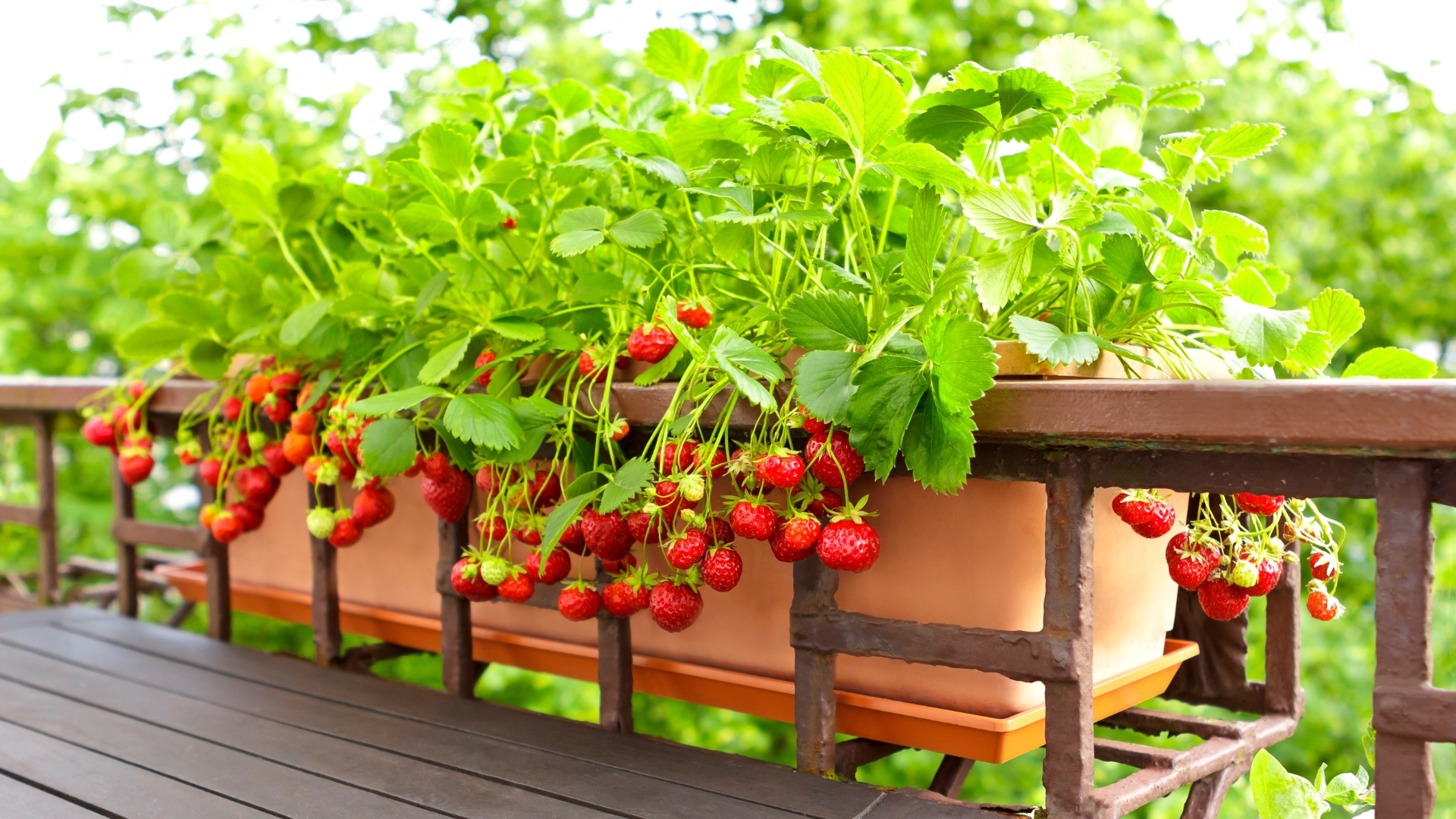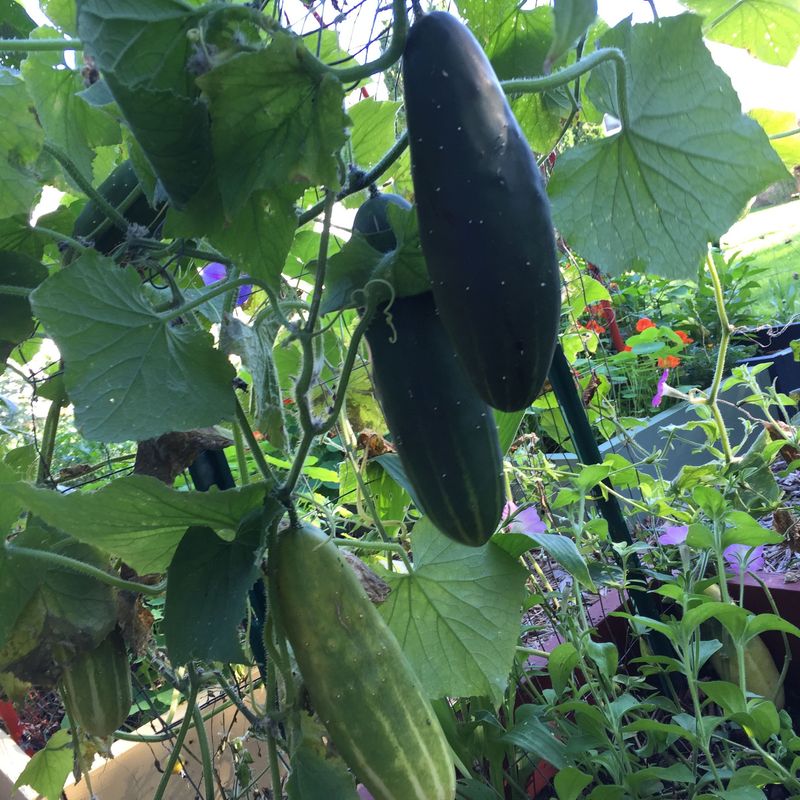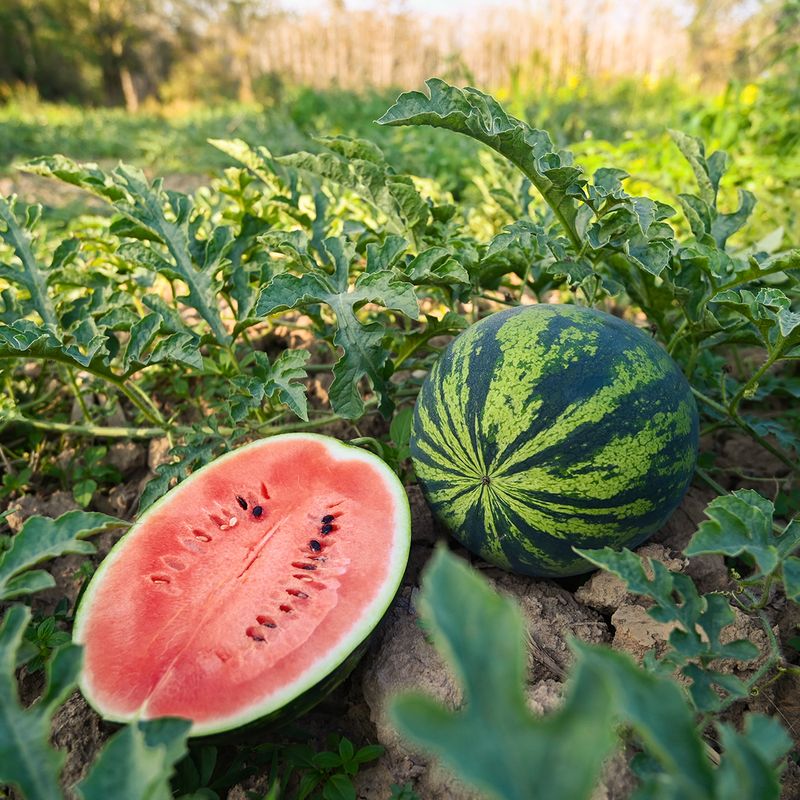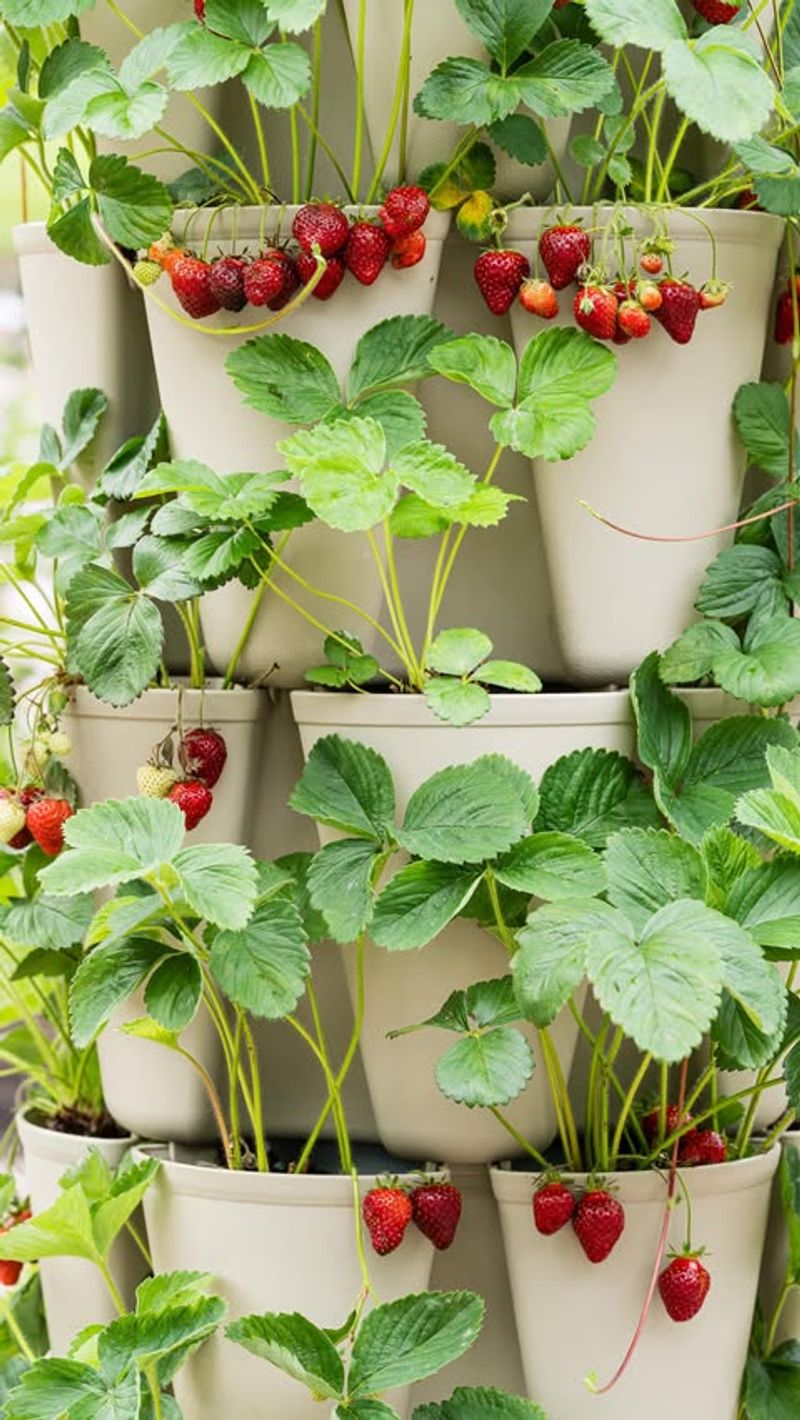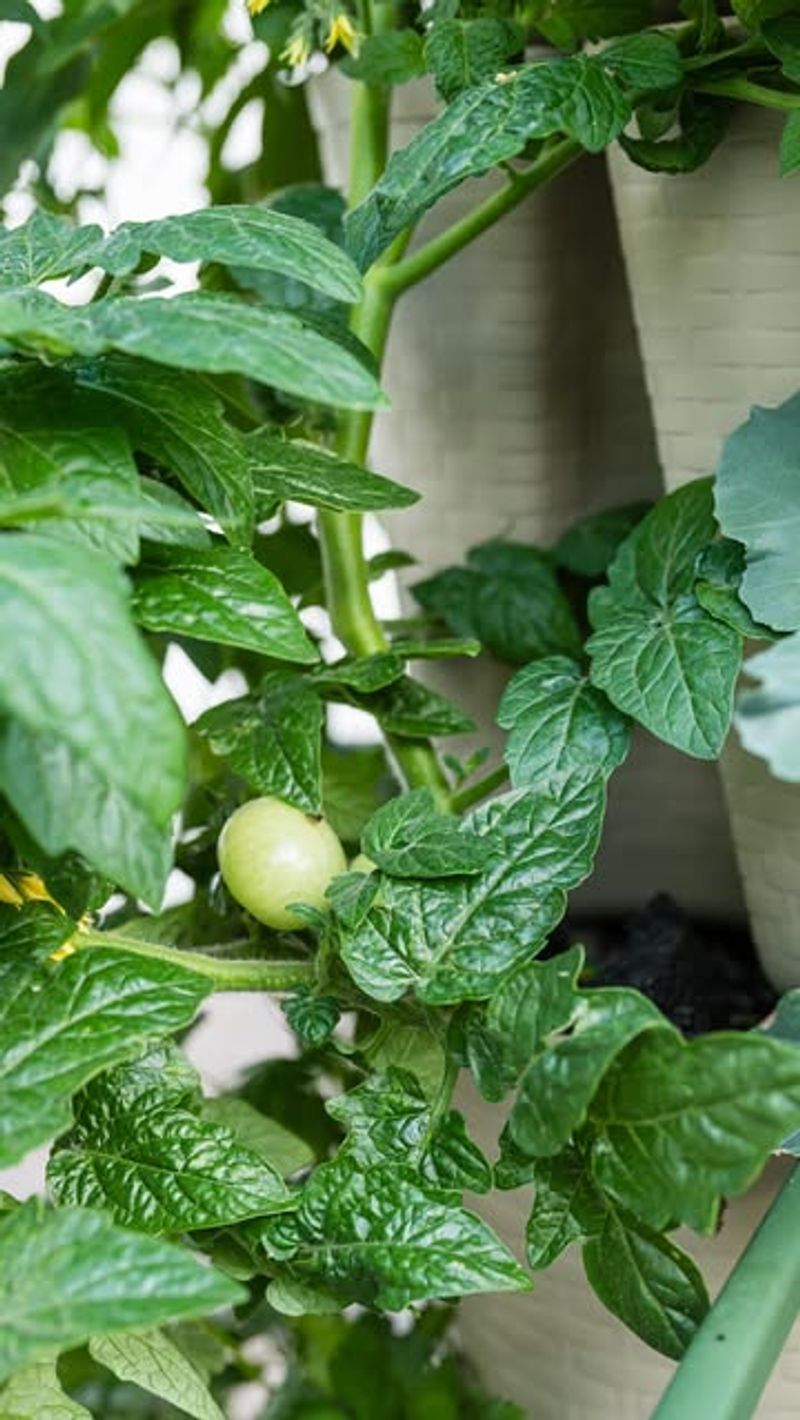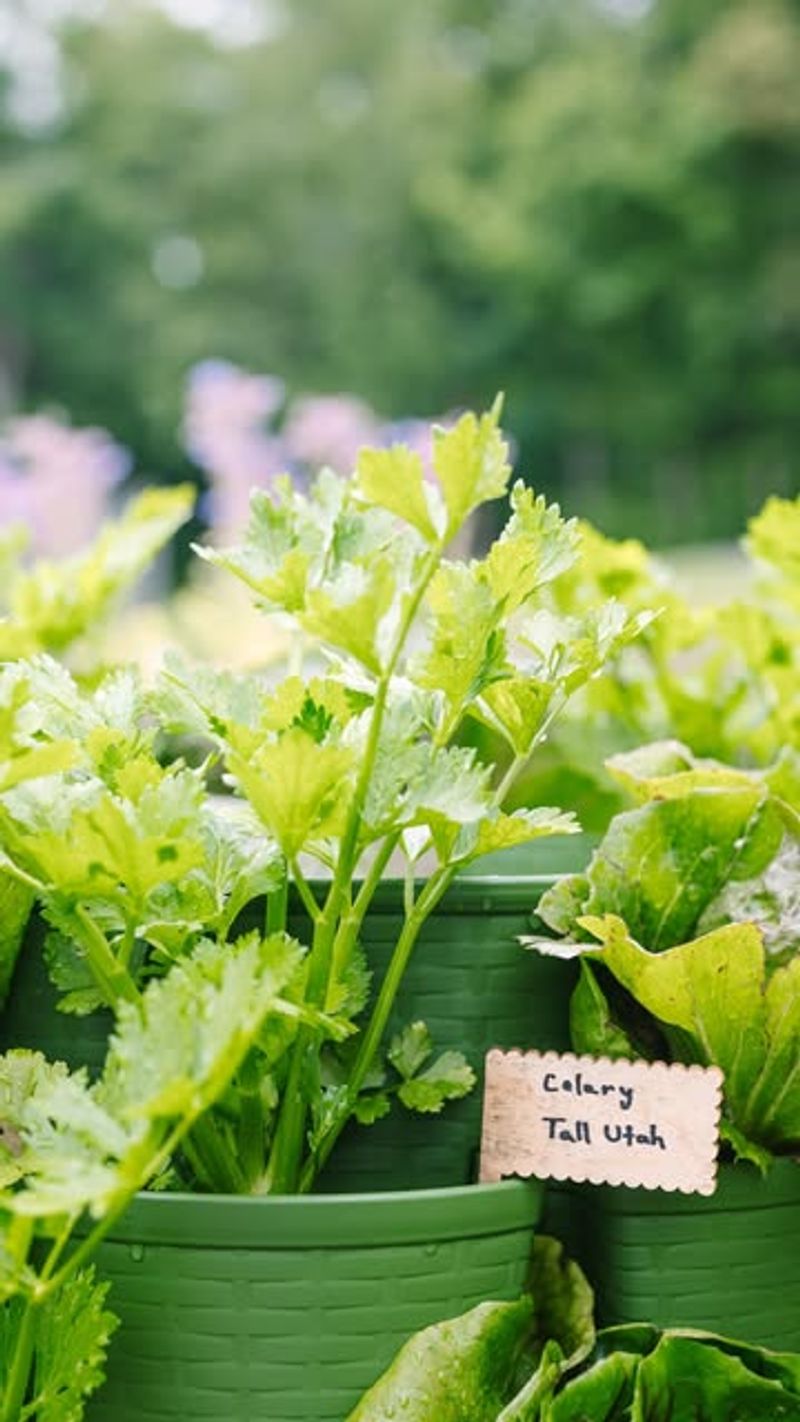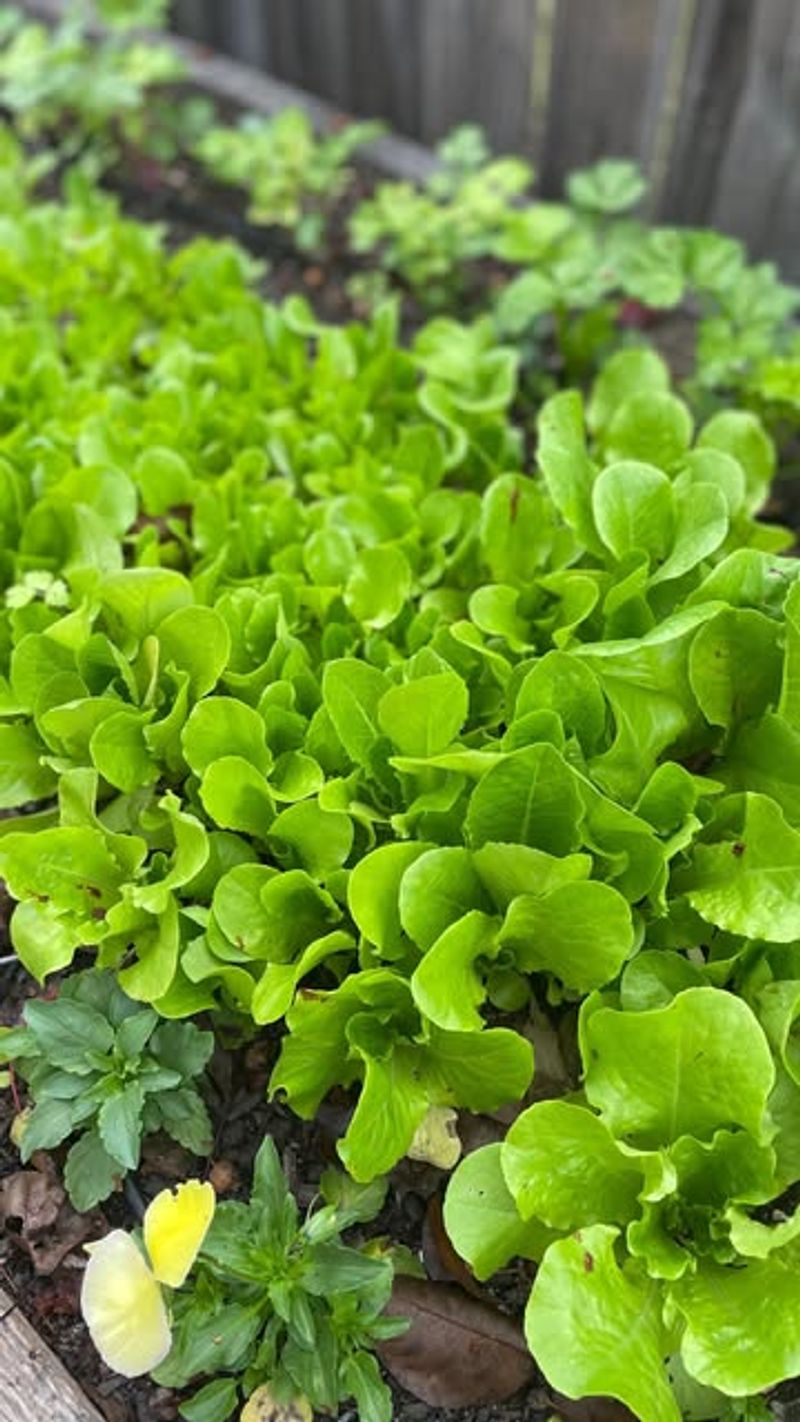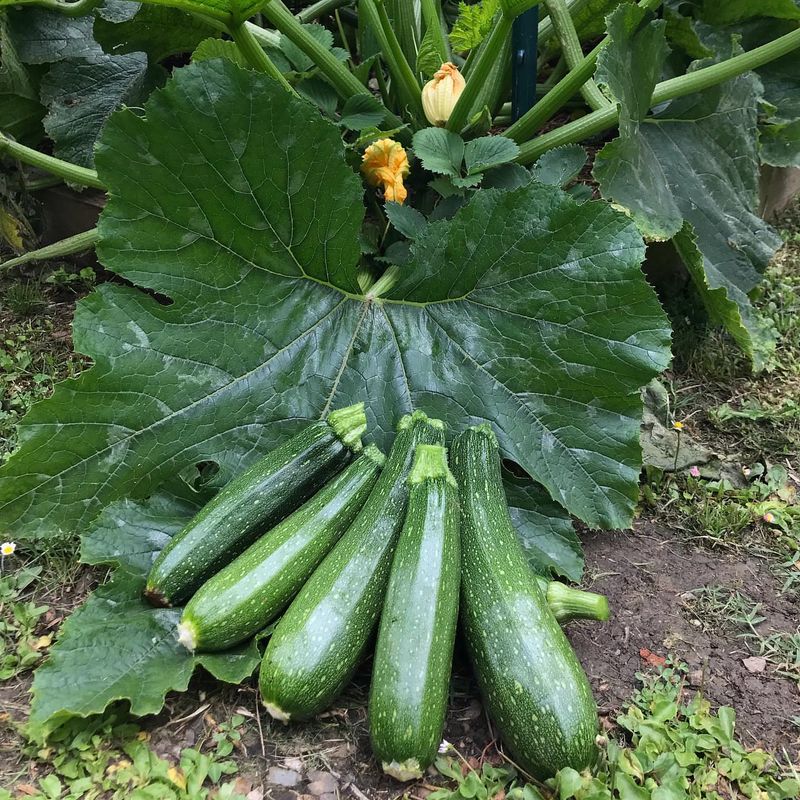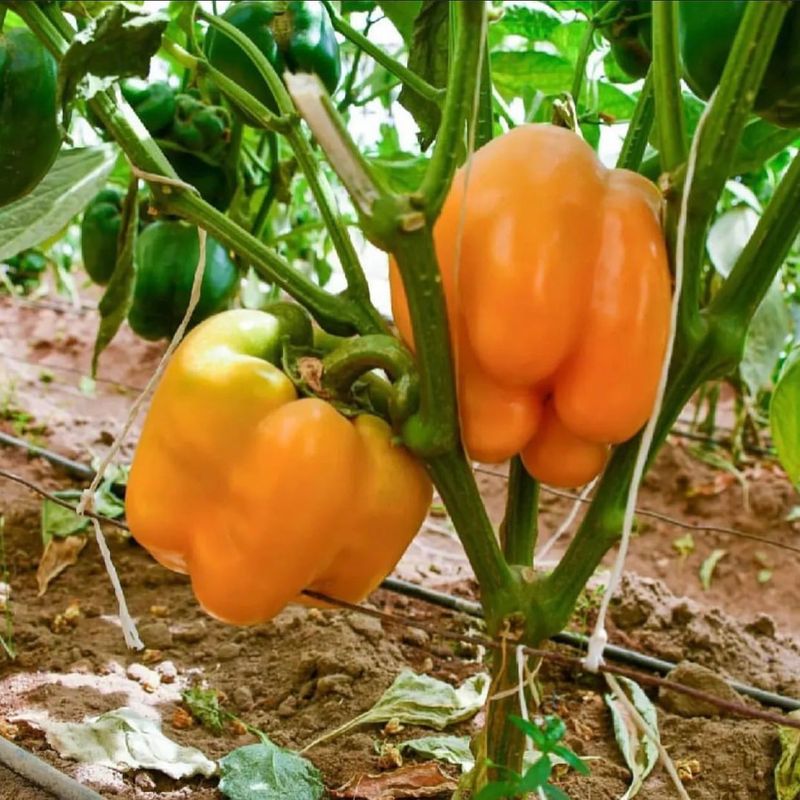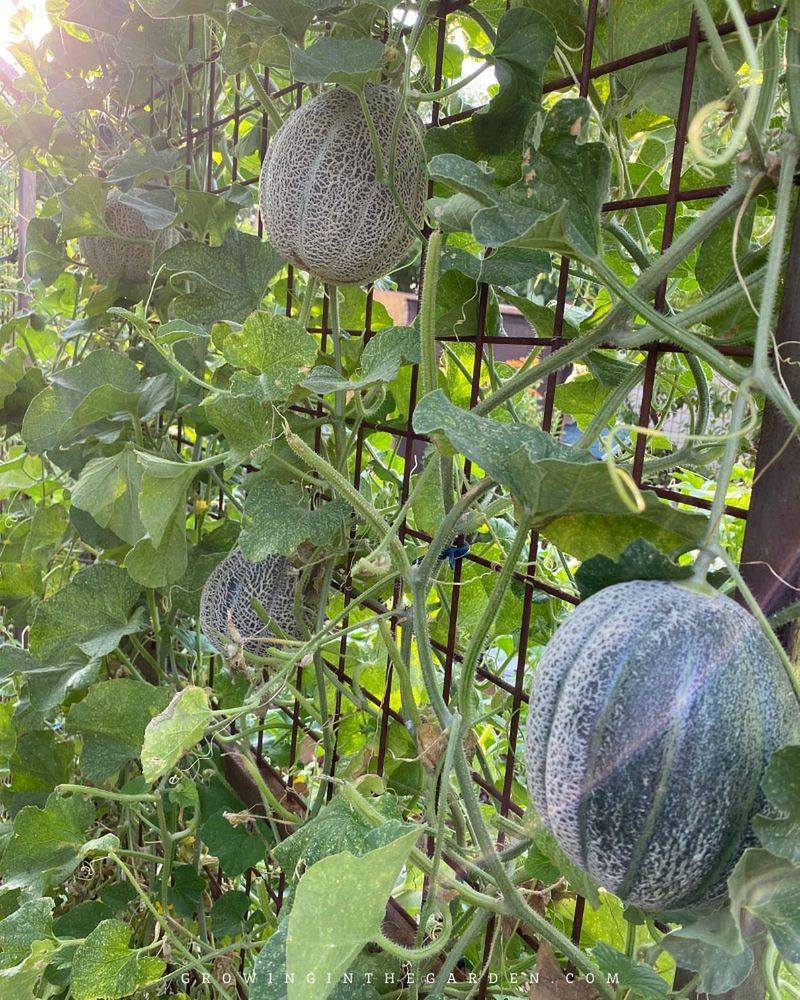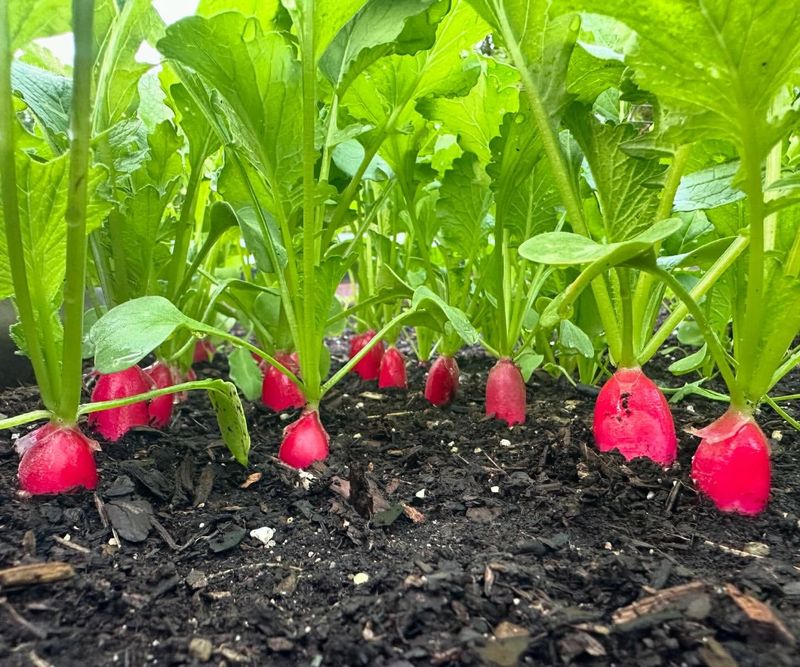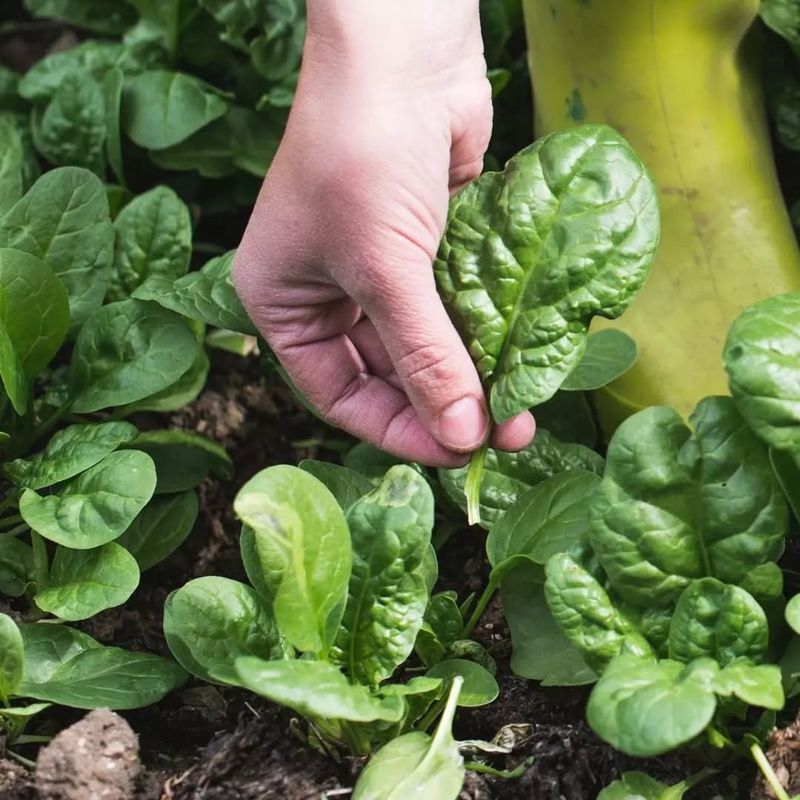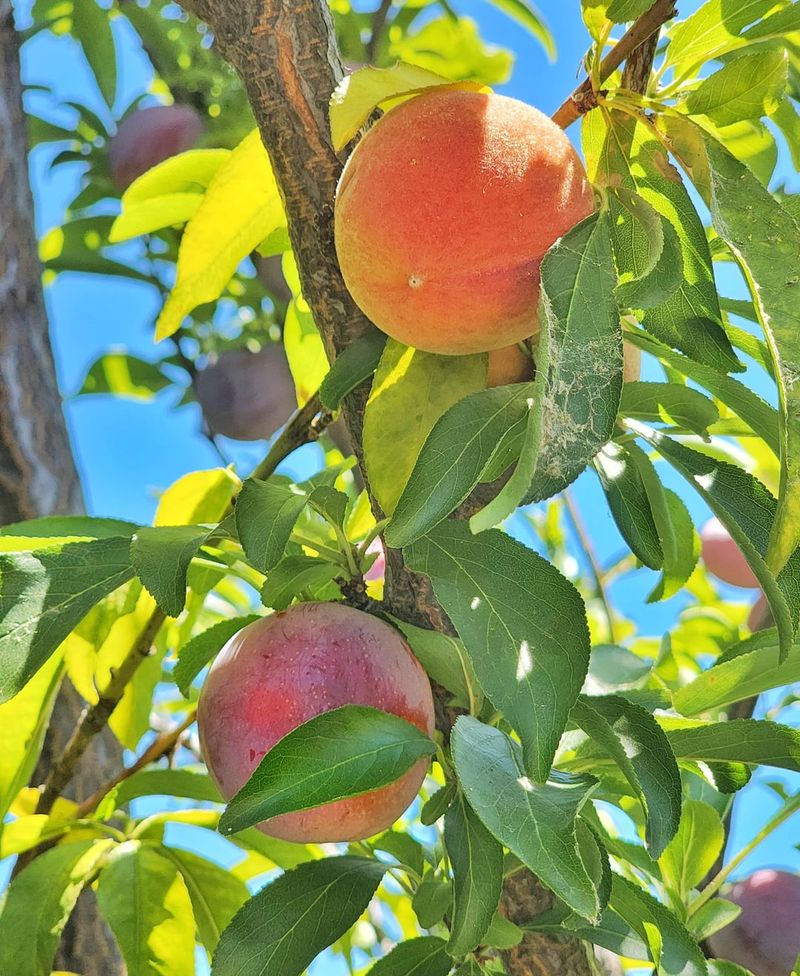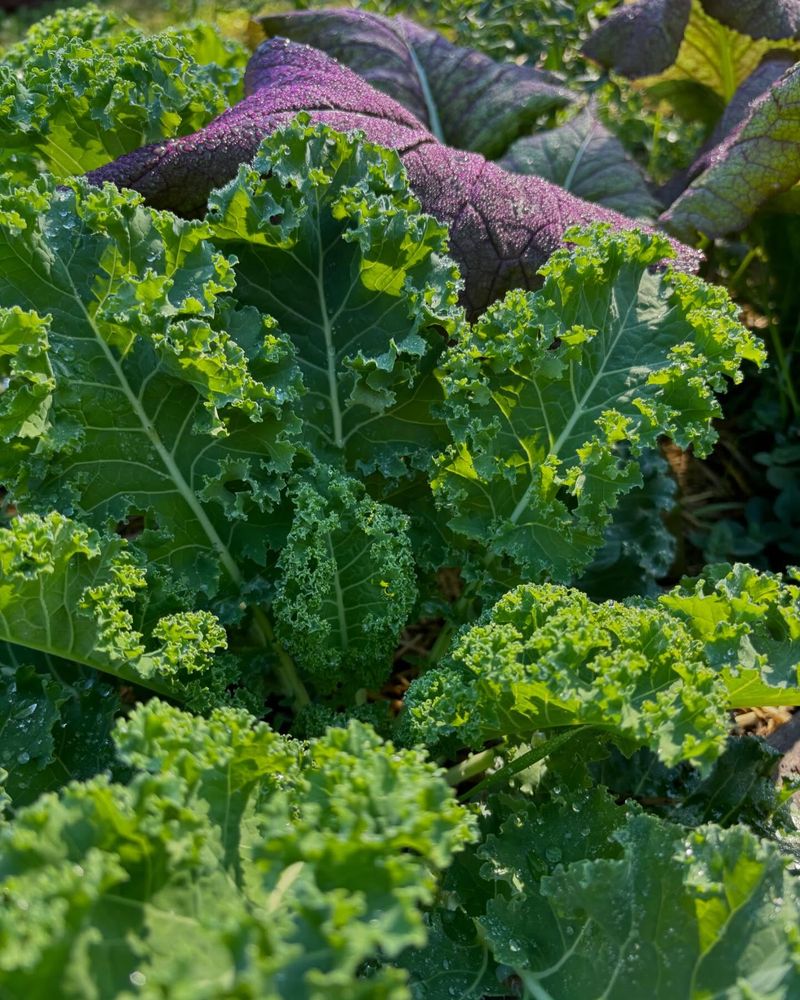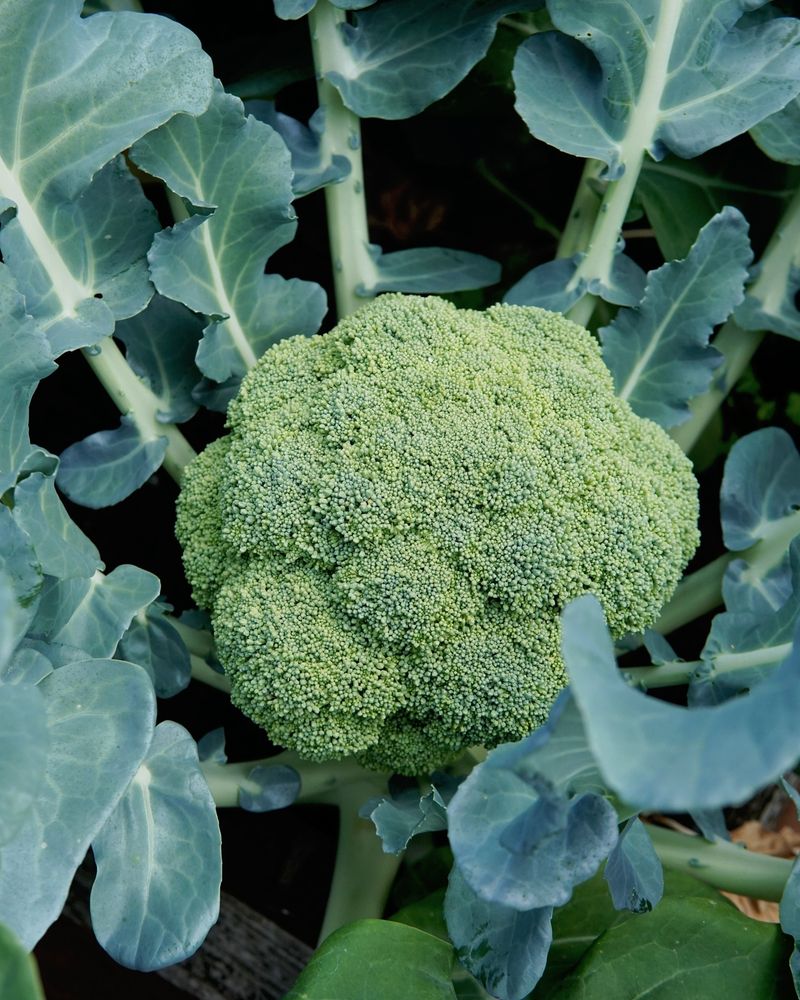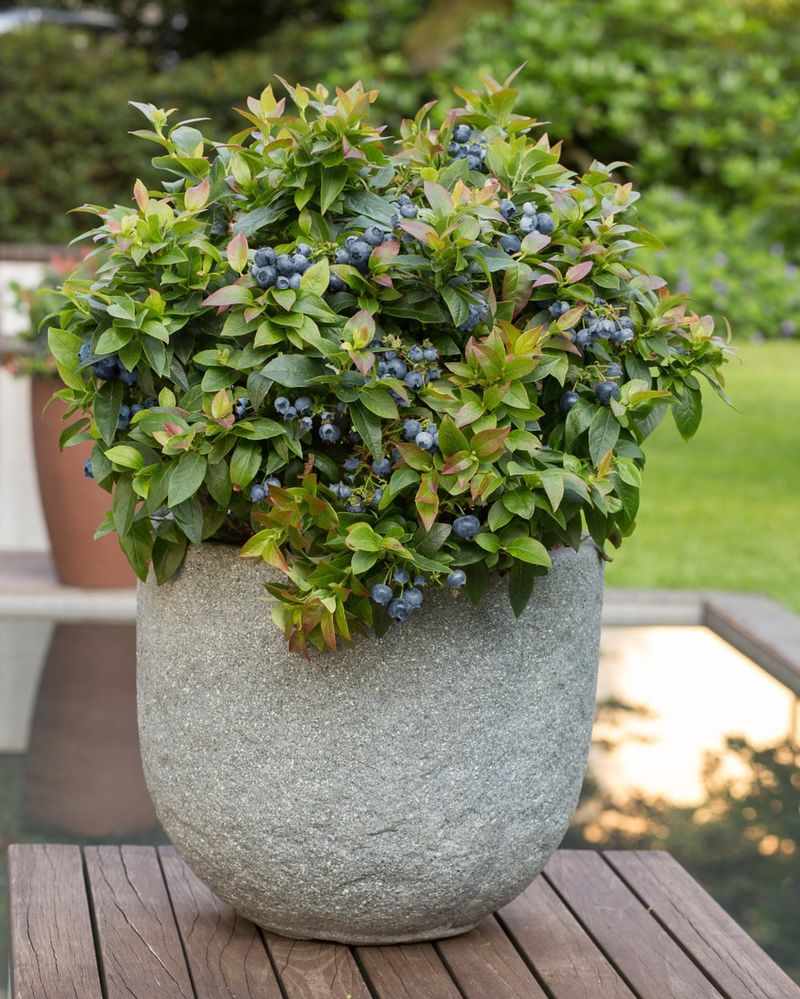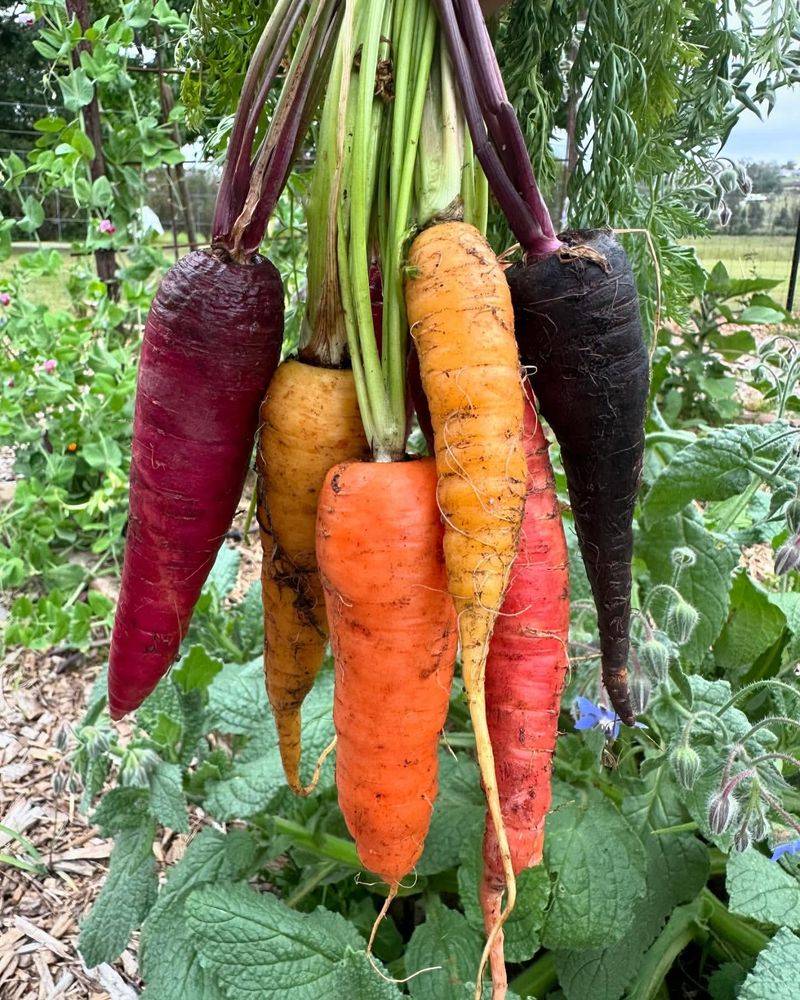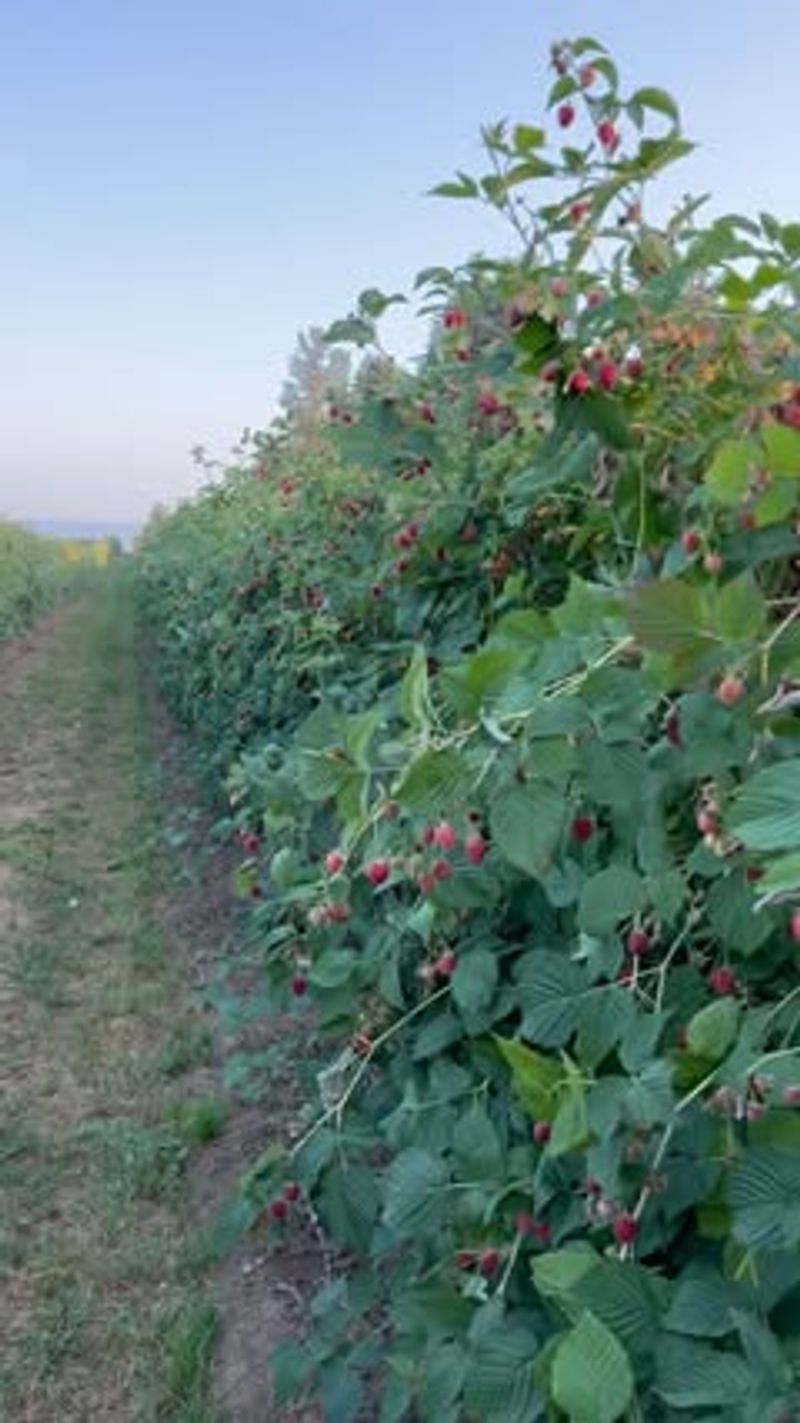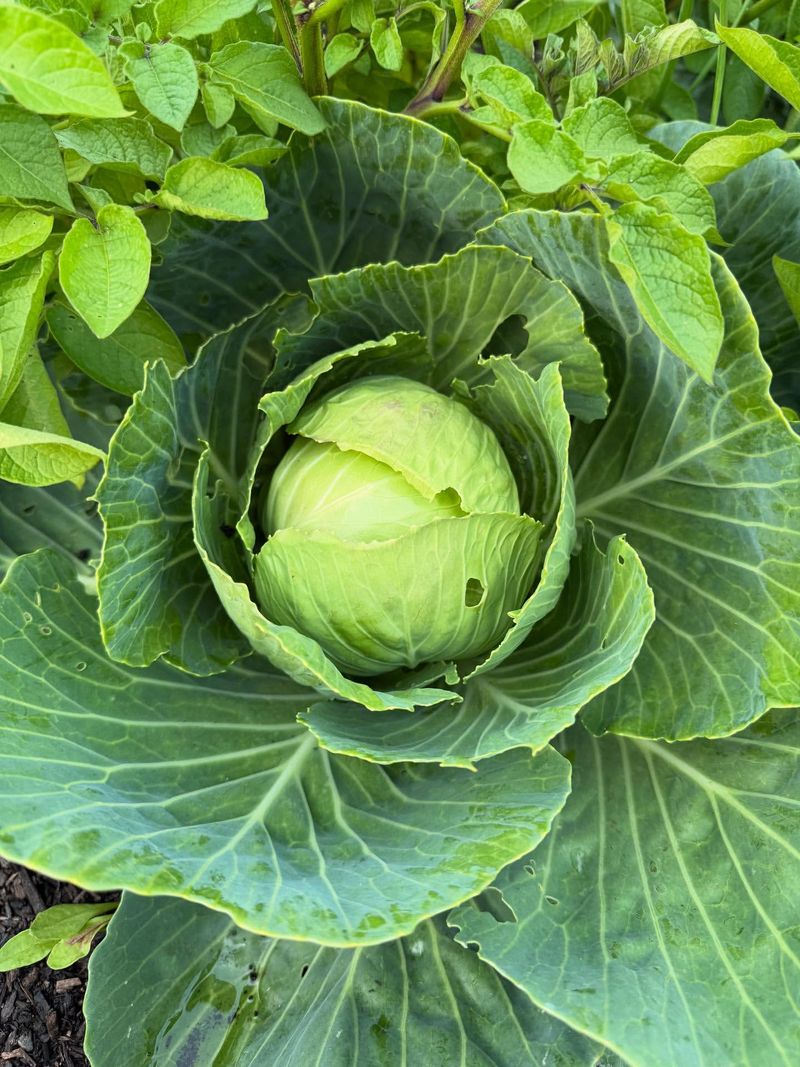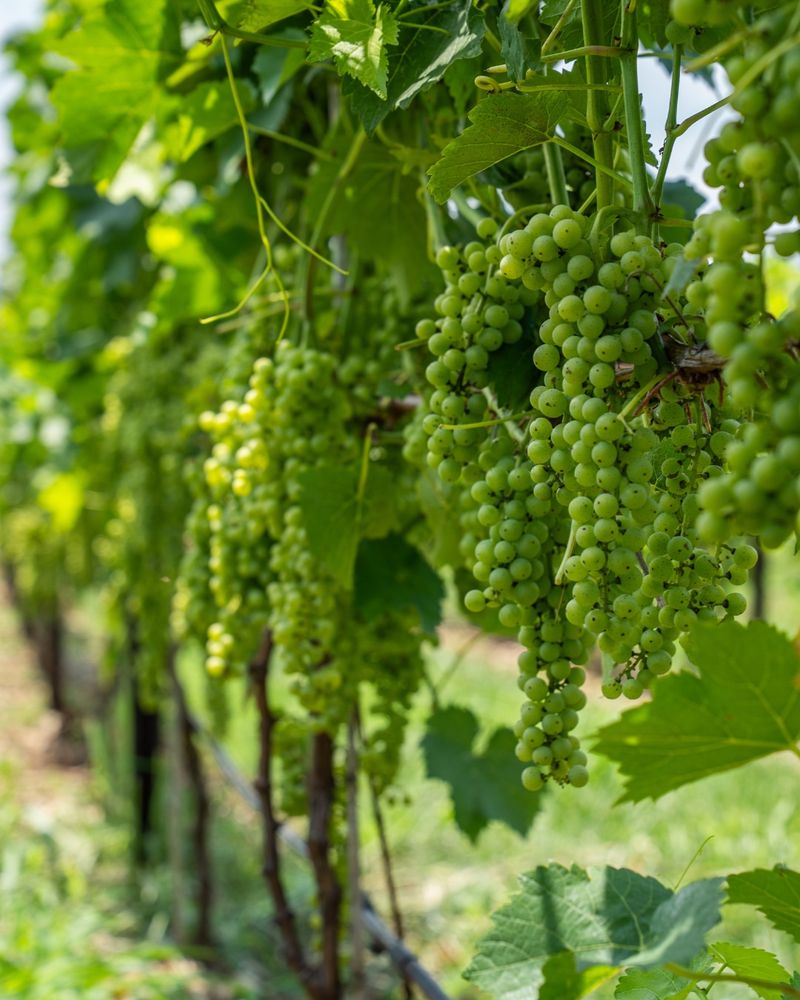I didn’t expect my garden to double as my snack stash, but here we are. Juicy, crisp, and straight from the soil—some of the most refreshing bites are the ones you grow yourself.
On hot days, I reach for these more than anything in the fridge. They’re easy to grow, packed with water, and actually taste like summer.
If you’re into gardening that also quenches your thirst, this list is full of gems.
1. Cucumbers
Made up of about 96% water, these crisp veggies are perfect for cooling down on hot days. You can grow them vertically on trellises to save space in smaller gardens.
Cucumbers thrive in warm soil and full sunlight. Plant them after the last frost has passed, and you’ll be harvesting these refreshing treats within 50-70 days.
2. Watermelon
Summer’s favorite hydrating treat contains about 92% water and loads of lycopene for heart health. They need plenty of space to sprawl, so plan accordingly when plotting your garden.
Start seeds indoors about a month before the last frost date. These sun-lovers require 80-90 days to mature, but your patience will be rewarded with sweet, juicy melons.
3. Strawberries
These ruby gems pack a hydrating punch at 91% water content. Perfect for containers or hanging baskets, strawberries are ideal for gardeners with limited space.
Choose ever-bearing varieties for continuous harvests throughout the growing season. With proper care, strawberry plants can produce for up to five years, making them a valuable addition to your hydrating garden.
4. Tomatoes
Bursting with 94% water content, homegrown tomatoes deliver unbeatable flavor compared to store-bought varieties. They’re versatile enough to grow in containers on patios or balconies if you lack garden space.
Start seeds indoors 6-8 weeks before the last frost date. Once established, tomatoes need consistent watering and support from cages or stakes to produce their water-rich fruits throughout summer.
5. Celery
With an impressive 95% water content, celery stalks make crunchy, hydrating snacks straight from the garden. Unlike store-bought varieties, homegrown celery has more intense flavor and fewer strings.
Start seeds indoors 10-12 weeks before the last frost date. Celery enjoys cool weather and consistent moisture, making it perfect for spring and fall harvests in most regions.
6. Lettuce
Containing 96% water, lettuce varieties offer endless options for hydrating salads. Fast-growing and space-efficient, you can harvest outer leaves while the plant continues growing for weeks of fresh greens.
Plant in succession every two weeks for continuous harvests. Lettuce prefers cooler temperatures, making it ideal for spring and fall gardens or partially shaded spots during summer months.
7. Zucchini
These summer squash varieties boast 95% water content and incredible productivity. Just a few plants can provide enough zucchini for your family and neighbors throughout the growing season.
Direct sow seeds after the danger of frost has passed. With regular harvesting, zucchini plants will continue producing their hydrating fruits for months, making them garden workhorses.
8. Bell Peppers
Crisp and refreshing, bell peppers contain 92% water and come in rainbow colors as they ripen. Their hollow structure makes them perfect vessels for stuffing with other hydrating ingredients.
Start seeds indoors 8-10 weeks before the last frost date. Peppers love heat and will produce their water-rich fruits throughout summer and into fall with proper care.
9. Cantaloupe
Sweet and juicy, cantaloupes provide 90% water content along with vitamins A and C. Their vines need space to ramble but can be trained up sturdy trellises in smaller gardens.
Plant seeds directly in the garden after soil temperatures reach 70°F. These melons require 80-90 days to mature and will tell you they’re ready when they easily slip from the vine.
10. Radishes
Quick-growing radishes offer 95% water content and can be ready to harvest in just 3-4 weeks. Their peppery crunch makes them perfect additions to salads and sandwiches.
Direct sow seeds every two weeks for continuous harvests. Radishes perform well in partial shade, making them ideal for tucking between larger plants or growing in fall and spring.
11. Spinach
Nutrient-dense spinach contains 93% water and grows quickly in cool weather. Its tender leaves can be harvested young for salads or allowed to mature for cooking.
Plant seeds directly in the garden as soon as soil can be worked in spring. Spinach bolts in hot weather, so plan for spring and fall harvests or grow in partial shade during summer.
12. Peaches
Juicy peaches contain 89% water and can be grown in most home gardens with the right care. Dwarf varieties work well in containers for those with limited space.
Select varieties suited to your climate zone for best results. Peach trees begin producing within 2-4 years of planting and offer decades of sweet, hydrating fruits when properly maintained.
13. Kale
Surprisingly water-rich at 84%, kale provides hydration along with exceptional nutrition. This hardy green can withstand light frosts, extending your growing season in many climates.
Direct sow seeds in early spring or late summer for fall harvests. Kale’s flavor actually improves after light frosts, making it a valuable addition to your hydrating garden through multiple seasons.
14. Broccoli
With 91% water content, broccoli offers hydration and cancer-fighting compounds in one package. After harvesting the main head, side shoots will continue producing for weeks.
Start seeds indoors 6-8 weeks before transplanting outdoors. Broccoli prefers cool weather, making it ideal for spring and fall gardens in most regions.
15. Blueberries
These antioxidant powerhouses contain 85% water and grow on attractive bushes that double as landscape plants. Their shallow root systems make them suitable for container growing on patios or decks.
Plant at least two varieties for cross-pollination and better yields. With proper care, blueberry bushes can produce their hydrating berries for 20+ years, making them a valuable garden investment.
16. Carrots
Sweet carrots contain 88% water and can be grown in containers at least 12 inches deep. Different varieties offer rainbow colors from traditional orange to purple, white, and yellow.
Direct sow seeds in loose, stone-free soil for straight roots. Carrots taste sweeter after light frosts, making them excellent for fall gardens in many growing zones.
17. Raspberries
Delicate raspberries pack 87% water content and grow on canes that produce for years. They spread naturally, creating a living fence or garden border with proper maintenance.
Plant dormant bare-root canes in early spring. Depending on the variety, you can enjoy summer-bearing or ever-bearing types for extended harvests of these hydrating berries.
18. Cabbage
Crisp cabbage leaves contain 92% water and grow in tight heads that store well after harvest. Different varieties offer options from tiny single-serving sizes to massive heads weighing several pounds.
Start seeds indoors 6-8 weeks before transplanting outdoors. Cabbage thrives in cool weather, making it perfect for spring and fall gardens in most climates.
19. Grapes
Juicy grapes contain 81% water and grow on vines that can be trained along fences or pergolas. This dual-purpose plant provides both food and shade when properly positioned.
Select varieties suited to your climate zone for best results. Once established, grape vines can produce their hydrating fruits for decades with proper pruning and care.

